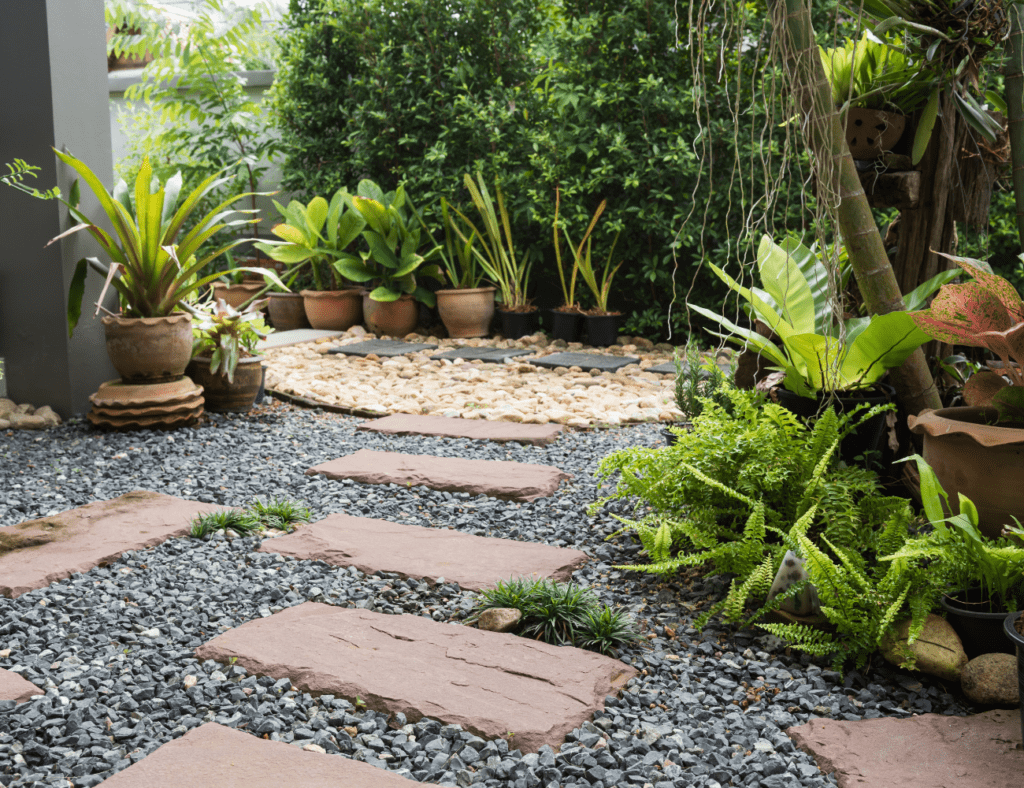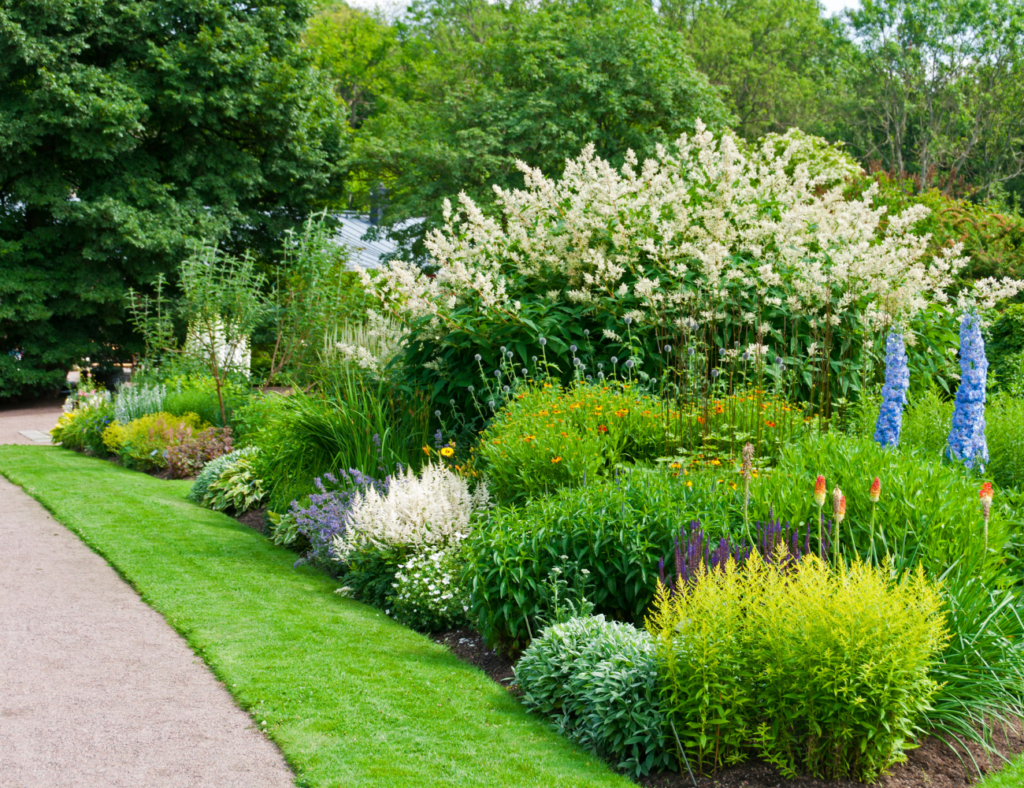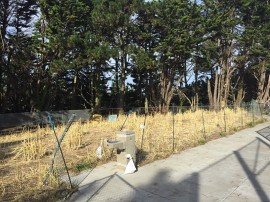Are you in the inspiring stage of a lawn makeover? Maybe you have already decided on starting brand new. Whether you are here in the Western San Mateo County area or on the other side of the world, there are many options for grass alternatives in every climate.
Transitioning to many different alternatives to grass lawns has become increasingly popular in recent years. This is especially true in areas like California, where water conservation is a priority due to drought conditions. In Southern California, traditional grass lawns can consume up to 75% of a household’s water usage, making alternative lawns a more sustainable option.
Grass Alternatives: Are They Just a Trend?
The Public Policy Institute of California’s Water Policy Center estimated that nearly 50% of the 409 water agencies in California are offering some sort of turf removal rebate, both residential and commercial, to encourage homeowners to switch to more water-efficient landscaping options. With the future climate in mind, this rehabilitation trend isn’t going anywhere.
In Western California, the average lawn size is around 5,500 square feet, and a lawn in the Sacramento area can use an average of 45,000 gallons of water per year.
Programs like San Diego’s turf removal rebate pay homeowners $4 per square foot to replace their lawns with more water-efficient desert plants.
Concerns about water usage, maintenance, and the environmental impact of traditional lawns drive this growing trend. As a result, many homeowners and landscapers are opting for drought-tolerant and low-maintenance alternatives to turf grass, such as native plants, ornamental grasses, and groundcovers.
Benefits of Alternatives to Grass Lawns
- Along with its natural and pure beauty, alternative grass options are eco-friendly. These landscapes will invite wildlife like birds, butterflies, and helpful insects.
- Many of the options on this list will have properties that improve air quality.
- Most alternative grass options have expansive biodiversity with beneficial soil microbes that decrease your need for fertilizers and pesticides.
- You can expect to conserve a significant amount of water. Also, expect to save money on lawn maintenance, including fertilizers, mowing, edging, weed killers, etc. Even though it might seem like a costly project, it is a financial investment over time. Alternative lawns have a visual aesthetic to home buyers, so switching over might increase your property value.
7 Alternatives to Grass Lawns
Creeping Jenny
Also referred to as moneywort, is a perennial plant that stays green throughout the year and grows close to the ground. Its lime-green leaves are situated on winding stems. This plant is often grown in pots to spill over the edges or to create a charming and whimsical path by wrapping around stepping stones. If you desire, you can trim it occasionally, and it can be one of the most visually appealing ground covers.
One of the advantages of this plant is that it does not require mowing, but you can prune it to maintain its neat appearance. Additionally, it grows quickly. However, regular watering and fertilizing are necessary, and in some states, it is considered an invasive species. The ideal growing conditions for creeping Jenny are low-lying areas with moist soil and sun to partial shade.
Wildflowers
Instead of having a grass yard, you can opt for a pollinator-friendly alternative by planting a mix of wildflower seeds. This will not only promote biodiversity but also attract bees, birds, and other pollinators. It is important to choose a seed mix that suits your area and goals, and to be patient during the growth process as it takes time and requires ongoing maintenance until fully established. Wildflower lawns can thrive in both sunny and shaded areas.
Evergreen Moss
Evergreen moss is often seen as a nuisance by gardeners and homeowners, but it can actually provide excellent coverage for your yard. This type of moss stays green all year round, grows well in any soil, and thrives in shady areas. It requires very little maintenance and provides a soft carpet-like texture that feels great to walk on.
There are different varieties of moss available, including the Acrocarp and Pleurocarp types that spread out to form a thick, flat carpet. With moss, you won’t need to water, mow, fertilize, apply pesticides, or weed your lawn.
Clover
Clover is a great option for a lawn due to its numerous benefits. It is very affordable and acts as a natural fertilizer for the soil. Gardeners often use clover as a soil conditioner, as it constantly provides fertilizer to the surrounding grass. It is particularly useful for yards with poor soil quality.
Other Clover Options
Micro-clover can also be used to overseed a lawn mixed with low maintenance turf grasses. Bee Turf, made up of clovers and wildflowers, was developed by West Coast Seeds to reduce maintenance costs and provide a habitat for pollinators. Bee Turf can be trimmed to achieve a manicured lawn or grown taller for a meadow-like appearance.
Sedum
Sedum is a type of groundcover that grows by spreading out to create a succulent leaf mat. These plants can thrive in full sunlight or partial shade. Once they are established, they do not require any extra watering, which makes them a sustainable and water-efficient option.
Xeriscape
Xeriscape is a landscaping technique that originated in drought-stricken areas, which is now being adopted by people across North America due to the high cost and limited availability of water. Xeriscapes can be designed in any landscaping style, and their benefits include water savings of 50-75%, less maintenance, no need for fertilizers or pesticides, increased property value, pollution free, and providing wildlife habitat.
Yarrow
This herbal lawn alternative is drought-tolerant and can be used as a groundcover. It can be mowed to create a lawn-like appearance. Although not a true grass, Yarrow (Achillea Millefolium) can be used as a substitute for a traditional lawn and can be either mowed or left to flower. It is possible to cultivate Yarrow from seeds, and installing an underground drip irrigation system can result in water savings of up to 70%.
Deciding on Your Landscaping Needs and Goals
Self- Analysis
- Reflect on your lifestyle. Consider how you and your family use the outdoor space. Do you enjoy gardening, entertaining guests, or simply relaxing outdoors? Identify the activities you want to accommodate in your landscape design.
- Assess your maintenance preferences. Determine how much time and effort you’re willing to invest in maintaining your landscape. This will help you choose plants and design elements that match your maintenance preferences.
- Identify your aesthetic preferences. Think about the visual style you want for your landscape. Do you prefer a formal, structured look or a more natural, informal design? Consider colors, textures, and plant types that appeal to you.
- Evaluate your budget. Determine how much you’re willing to spend on your landscape project. This will help you prioritize your goals and make informed decisions about materials, plants, and design elements.
- Set SMART goals. Establish Specific, Measurable, Attainable, Relevant, and Time-bound goals for your landscape project. This will help you stay focused and ensure that your landscape design meets your needs and preferences.
Site Analysis
This will help you identify key elements that may affect your design map. Start by taking pictures of your property. Make notes of structures, plants, site views, etc. You will want to take special note of areas used for walkways, elevated, and any other distinctive features that will affect what you can do with the area.
Design Considerations
- Plant selection: Choose plants that are native to California, as they are adapted to the local climate and require less water and maintenance.
- Bloom times: Select plants with varying bloom times to encourage year-round color in your yard.
- Lawn alternatives: Consider using alternative lawn options, such as native turf grasses, groundcovers, or gravel, to reduce water usage and maintenance.
Irrigation
During the establishment period, container-grown California native plants need careful attention and regular water. After about three months of regular water, you can begin to taper the watering regime. Your microclimate and plant choice will ultimately determine your final supplemental irrigation needs.
Soil Preparation and Maintenance
Before planting, ensure the soil is well-draining and amend it if necessary. Water the plant every 3 to 4 days for the first month after planting, allowing the ground to dry out a bit between waterings.
Lawn Removal Ideas
- Solarization: Cover the lawn with clear plastic to heat the soil and kill the grass.
- Sheet mulching: Layer cardboard or newspaper over the lawn and cover it with mulch to smother the grass.
- Manual removal: Use a sod cutter or shovel to remove the grass.
Lawn Establishment and Maintenance
The time it takes to establish a lawn depends on the grass alternative and environmental conditions. Warm-season (especially throughout California) grasses need soil temperatures between 60 and 75 degrees Fahrenheit and daytime temperatures consistently above 80 degrees. They may be tall enough to mow within 2 months of seeding, but a full, dense expanse takes up to a year to fully mature.
Maintenance directions vary depending on the grass alternative. Some require occasional mowing, while others are mowing-optional. Watering needs also differ, with some alternatives needing significantly less water than traditional lawns.






